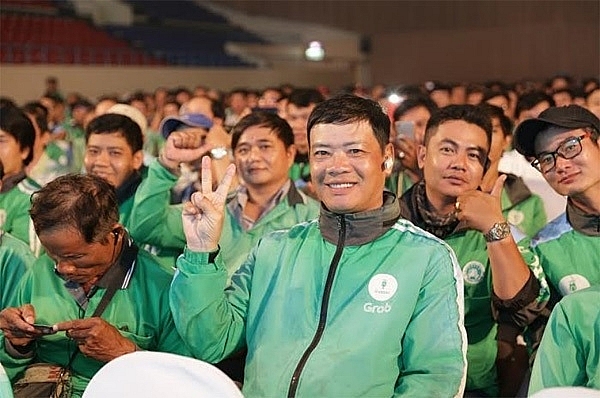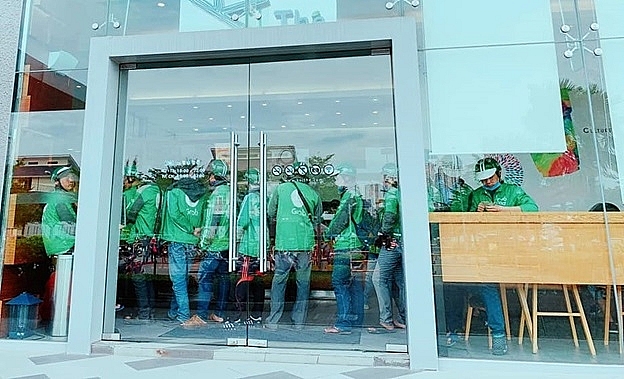GrabFood expands to 12 new cities and provinces: Risky or wise?
GrabFood expansion: Risky or wise?
First of all, it is obvious that the on-demand food delivery market in Vietnam has great potential. According to Euromonitor, the Vietnamese market has a growth rate of 11 per cent per year, and is expected to be worth $38 million by 2020. Besides some big players with a firm position in the market such as Foody, Now.vn, and Vietnammm, users also witnessed some well-known brands withdrawing from the food delivery market due to the huge competitive pressure such as Foodpanda or Lala. This proved that the food delivery market is not an easy market to operate in.
As a newcomer among its rivals, GrabFood proved its strength with remarkable milestones on the journey to expand its domestic operation. After the impressive success in Ho Chi Minh City, Hanoi, and Danang, it continued to launch, at the same time, in 12 new provinces and cities, bringing the total number of locations where GrabFood is present up to 15 cities and provinces and becoming the fastest growing food delivery service in Vietnam as well as the leading player in the market today.
Many thought it would be impossible for a newcomer to expand to 15 provinces and cities in a measly seven months. No player has previously been able do the same thing, even big names with more experience, because this process requires thorough research and comprehensive investment as well as time to develop a most detailed plan.
However, the successful performance of GrabFood has shown that this plan was not rushed. With a large base of 175,000 driver-partners, GrabFood has its own foundation to "go fast" without being afraid of "stumbling." With this driver-partner network, almost every order has been received and delivered immediately. Obviously, GrabFood knows very well how to wield its advantages to dominate the market, putting its name above other strong opponents.
 |
| The massive number of driver-partners is a firm foundation for GrabFood to achieve its ambition of dominating the market |
Another reason raising doubts about GrabFood’s expansion plan is the dispersion of competitive resources, especially when the race of service quality has not reached its end yet. In the early stages of development, what a brand needs is focusing on slow but steady steps, ensuring certain success in main markets. Therefore, rapid network expansion is considered risky, which is not sure to succeed, and even risks losing old markets.
However, the expansion of GrabFood was absolutely reasonable. Currently, GrabFood is the leading service in terms of delivery speed according to 80 per cent of users in a research by GCOMM, so the implementation of new strategies with the aim of achieving comprehensive success will strengthen and maintain the leading position of GrabFood.
The central area is always considered an extremely "lucrative" part of the food delivery market in Vietnam. With the new move, is GrabFood ignoring the best part of the "cake" and giving it up for other opponents? It can be seen that, when the competition in the big central markets is becoming more competitive, expanding to smaller but potential areas is a wise move by GrabFood to get the upper hand and “skim” the market before other players take action.
According to Vu Vinh Phu, former chairman of the Hanoi Supermarket Association, only strong brands can survive in the food delivery market. However, consumers can benefit even more when more and more apps are launched and compete fiercely in quality, discounts, and promotions.
Marking a new position
After achieving the very first successes in the most competitive markets, Grab's strategy of expanding to new cities and provinces helps them get the upper hand in the coming times. With a total of 15 provinces and cities, GrabFood also becomes the fastest growing food delivery service in Vietnam.
The expansion also opens up new opportunities for GrabFood’s partners. Driver-partners will have additional income from food delivery, which encourages Grab to continue to launch more GrabExpress services in the future. According to Grab, the income of GrabBike driver-partners increased by 20 per cent thanks to new services.
Besides, merchant-partners have more chances to access a wide range of consumers when the user’s habit of food delivery is built up. At this time, merchant-partners no longer depend on location or weather as before. In addition to food delivery, GrabFood also supports restaurants with effective marketing campaigns. It can be called a "mutually beneficial" ecosystem.
 |
| GrabFood’s development opens up more opportunities for both driver-partners and merchant-partners through a mutually beneficial ecosystem |
Looking at the development scale of Southeast Asian countries, it can be seen that Grab's vision for GrabFood is not only to develop a food delivery service, but also to become an everyday superapp. “With the advantage of more than 175,000 driver-partners, Grab is able to expand to many other areas,” said Pham Dinh Thuong, Deputy Director of the Legal Department, Ministry of Industry and Trade.
To achieve this vision, firstly, Grab's services need to become popular in society. Expanding to 12 new cities and provinces is a risky decision, but Grab’s long-term calculations are apparent. “On the whole, Grab’s management has made good moves. Expanding into payments and food delivery are smart, synergistic moves,” said Nitin Pangarkar, associate professor at the Department of Strategy and Policy at the National University of Singapore (NUS) Business School.
What the stars mean:
★ Poor ★ ★ Promising ★★★ Good ★★★★ Very good ★★★★★ Exceptional
Related Contents
Latest News
More News
- Businesses ramp up production as year-end orders surge (December 30, 2025 | 10:05)
- Vietjet chairwoman awarded Labour Hero title (December 29, 2025 | 13:06)
- How to unlock ESG value through green innovation (December 29, 2025 | 10:03)
- AI reshapes media and advertising industry (December 29, 2025 | 08:33)
- FPT and GELEX sign deal to develop blockchain tech for global markets (December 29, 2025 | 08:29)
- Vietnam’s GDP forecast to grow by 9 per cent in 2026 (December 29, 2025 | 08:29)
- Women entrepreneurs are key to Vietnam’s economic growth (December 29, 2025 | 08:00)
- Vietnam's top 500 value-creating enterprises announced (December 27, 2025 | 08:00)
- The PAN Group shaping a better future with ESG strategy (December 26, 2025 | 09:00)
- Masan Consumer officially lists on HSX, marking the next phase of value creation (December 25, 2025 | 13:20)

 Tag:
Tag:





















 Mobile Version
Mobile Version